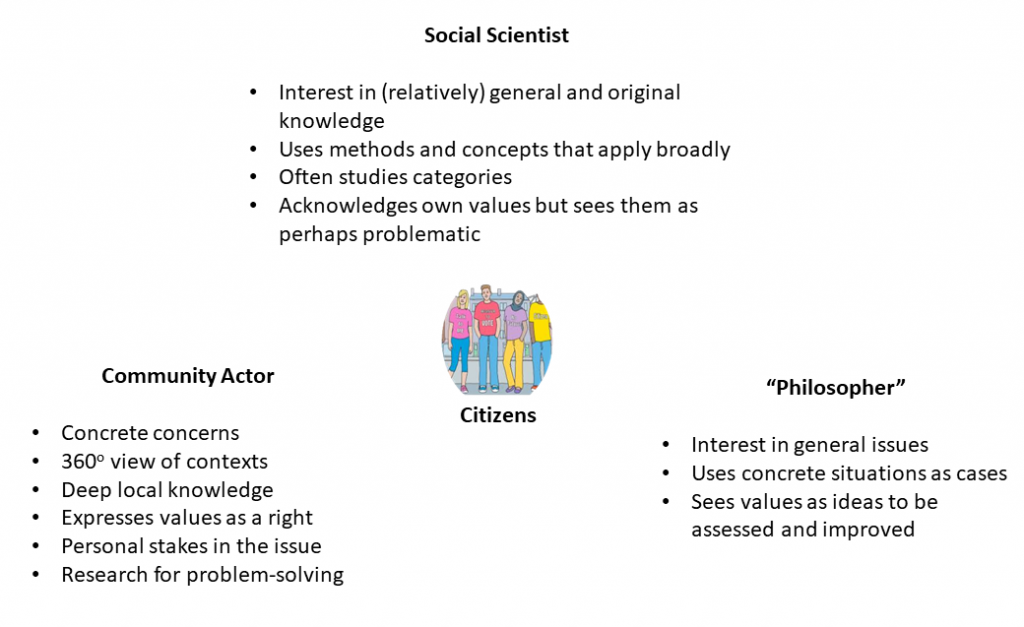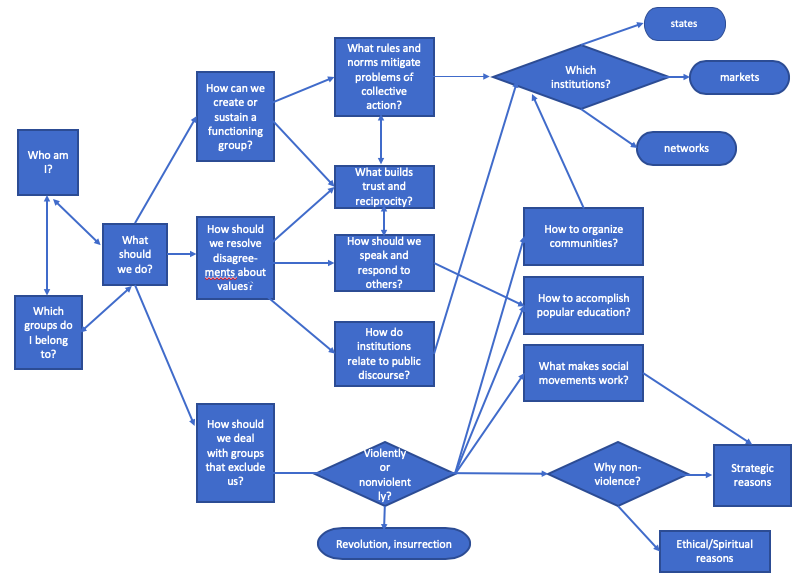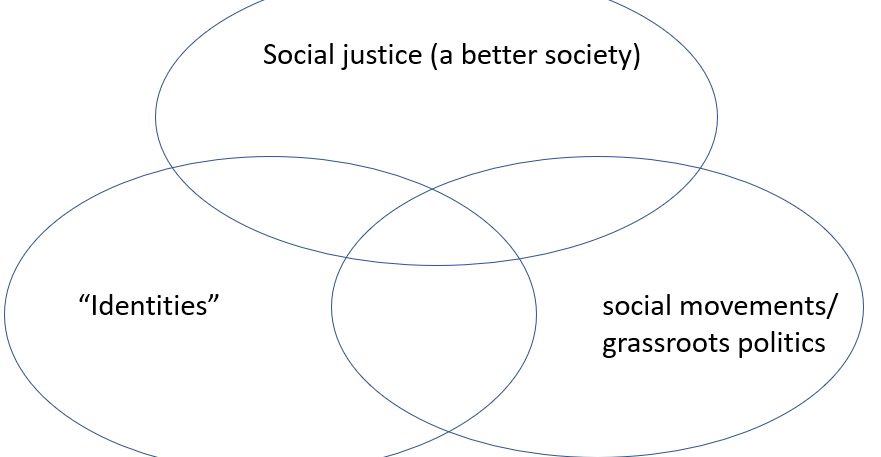(On my way to London for a small conference on Friedrich Hayek and Elinor and Vincent Ostrom).
These are some of the activities that we undertake as we organize social activity in a mixed 21st century economy:
- Observing prices of inputs and outputs and identifying opportunities for profit (market);
- Discussing a collective choice and then voting according to our preferences (democracy);
- Taking direction from a supervisor and directing subordinates to help fulfill that order (bureaucracy);
- Framing a complaint against another party and bringing it before a neutral tribunal (law);
- Forming an intimate, loving relationship with a concrete other person and taking that person’s interests as one’s own (family, and related groups);
- Drawing people of like minds together into a voluntary grouping (network);
- Assembling evidence for a conclusion and submitting it for expert review and possible publication and citation (science);
- Constructing a creative work within the boundaries of a genre and seeking the approval of a knowledgeable aesthetic community (art);
- Professing articles of faith and participating in the rituals of fellow believers (religion).
Sometimes these ways of interacting come into conflict. A society can use one method or another to make a decision, but not both at the same time; and the consequences of such choices may be profound. For example, if you have no ability to produce goods that have market value, but social outcomes are determined entirely by #1, then you may starve. But if the majority hates people like you and laws are made solely by #2, you may die. In subtler everyday cases, the balance among state regulation, bureaucracy, scientific autonomy, etc. can have huge economic and sociological effects.
Still, I start with the presumption that we need all of these ways of interacting. Each reflects accumulated experience and partial but significant truths about the world. Each results from the cumulative thinking of countless people, who surpass the mental capacity of any individual or small group. Each has proven a degree of fitness in the competition for support. It’s a dangerous form of arrogance to minimize any of these logics a priori, even though we are entitled to argue for one over the others in particular cases.
Thus I dissent from Hayek-style classical liberals who would assign these eight logics to two boxes. For Hayek, #1, #4, #5, #6 and #8 are “emergent” or “spontaneous” forms of order that reflect lots of people making specific choices in their own circumstances. We are good at these ways of thinking. On the whole, using these methods should generate progress, as improvements survive and mistakes die off. These methods should yield enough stability and predictability that individuals can act intentionally.
In contrast, Hayek thinks that #2 and #3 are examples of deliberate social engineering, which exceeds our capacities and endangers others by allowing too much discretion.
I disagree with this categorization because all these logics are emergent. Their current states reflect the largely uncoordinated activity of countless predecessors, who have thought and interacted in eight different ways. Just for example, any democratic system (#2) is a highly complex combination of rules, norms, forums, and offices. It cannot simply be the rule: “50%+1 wins,” because that rule doesn’t stand on its own. Who gets to vote? Who sets the agenda? Who is influential? The current state of a democratic system probably reflects some successful adaptation to circumstances. See Ostrom, E. (1986). An Agenda for the Study of Institutions. Public Choice,48(1), 3-25.
I also dissent from strong democrats and social democrats who think that only #2 is ultimately just; therefore, a deliberative democracy should be sovereign and able to make all decisions unless it chooses to assign decisions to other institutions (including courts and markets). I think this approach privileges one form of interaction, which has distinctive limitations as well as advantages.
So far, this is a familiar argument for a mixed economy (or political pluralism in Galston’s sense). I’ve tried to defend this position before, for instance in “polycentricity: the case for a (very) mixed economy” and “should all institutions be democratic?” Here I would like to add a point about the impact of such pluralism on our mentalities.
Participating in any collective endeavor teaches skills and values. We learn and develop lasting habits of character from each of the activities listed above.
Every time we use one of these logics, we learn to see the world in a particular way–for example, as a set of goods that all have current prices, or as a commonwealth shaped by our collective decisions, or as set of natural processes that can be objectively understood. We are responsible for making specific decisions: what to buy or sell, which way to vote, whether to join a church. But we are also responsible for making the meta-decision about which decision-making processes to use. It is unlikely that we will make those meta-decisions wisely unless many of us have substantial experience with each logic.
If market logics are hegemonic, everything (and everyone) looks like a good with a price, and other ways of thinking atrophy. Therefore, classical liberals/libertarians are wrong to think that a market accommodates all values and mentalities that are compatible with other people’s freedom. A rampant market shapes the subjectivity of its participants and makes them less capable of other forms of interaction. This is the truth in the charge against “neoliberalism” (a social order that is heavily influenced by market logics.)
A related problem for libertarians is that they need people to be socialized to favor market values. Two centuries after classical liberal ideas emerged, great masses of people have not gravitated to them. And when people have the freedom to form groups, sometimes the groups they design–such as gated residential communities and disciplined corporate bureaucracies–probably teach the next generation to expect and value imposed social order. Should young people be raised to think in market terms? If so, what is a legitimate way to accomplish that?
But the same charge might be made against the other logics, too. There are subcultures in which almost everyone is allergic to market thinking and only learns to participate in voluntary networks or aesthetic communities. Yet these subcultures don’t spread to the whole population any more than libertarianism does.
I am hinting at two empirical claims: 1) Immersion in any social form shapes subjectivity, influencing how people interact and the forms of interaction that they value. And 2) People who work in multiple social forms are better at weighing their respective pros and cons.
I think there is a large but dispersed empirical literature on the first claim, but I have not explored it thoroughly. I doubt much is known about the second claim.
The underlying theory here is compatible with two famous thinkers, who make somewhat strange bedfellows. One is the author of Federalist #51 (probably Madison) who writes, “This policy of supplying, by opposite and rival interests, the defect of better motives, might be traced through the whole system of human affairs, private as well as public.” He is emphasizing one principle of good design (division of power) that might be used across different social forms, but we could generalize his point. People are embedded in many private and public arrangements, all of which need principles of design.
That bring me to John Dewey, who writes, “The forms to which we are accustomed in democratic governments represent the cumulative effect of a multitude of events, unpremeditated as far as political effects were concerned and having unpredictable consequences.” For Dewey, as we develop new forms of self-government in any domain (a state, an office, a family), we have an opportunity to learn what works better and test its logic elsewhere.
See also: against state-centric political theory; the right to strike; China teaches the value of political pluralism; explaining Dewey’s pragmatism; the truth in Hayek; the legacy of Elinor Ostrom and the Bloomington School; and why the deliberative democracy framework doesn’t quite work for me.



